
| Самолеты (сортировка по:) | |||||
| Страна | Конструктор | Название | Год | Фото | Текст |
LVG C.IV
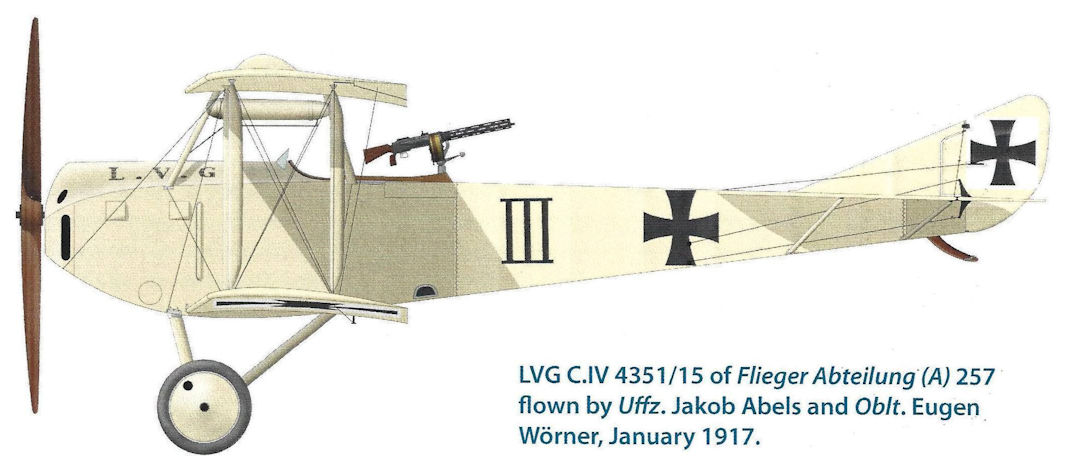
|
Страна: Германия Год: 1916
|
| LVG - G.I - 1915 - Германия | <– | –> | LVG - D 10 - 1916 - Германия |
 |
J.Herris - LVG Aircraft of WWI. Volume 2: Types C.II-C.V /Centennial Perspective/ (35) |
| LVG C.IV 4351/15 of Flieger Abteilung (A) 257 flown by Uffz. Jakob Abels and Oblt. Eugen Worner, January 1917. |
 |
J.Herris - LVG Aircraft of WWI. Volume 2: Types C.II-C.V /Centennial Perspective/ (35) |
| LVG C.IV 264/16 of the Bayerishe Flieger Abteilung 5 at Douai. |
 |
J.Herris - LVG Aircraft of WWI. Volume 2: Types C.II-C.V /Centennial Perspective/ (35) |
| LVG C.IV of the KG I |
 |
J.Herris - LVG Aircraft of WWI. Volume 2: Types C.II-C.V /Centennial Perspective/ (35) |
| LVG C.IV in plain finish and sharkmouth marking. Unit unknown. |
 |
J.Herris - Development of German Warplanes in WWI /Centennial Perspective/ (1) |
| Britenschreck in color. Unusually, LVG cut out the company initials from the engine cowling on the C.IV. |
 |
J.Herris - LVG Aircraft of WWI. Volume 2: Types C.II-C.V /Centennial Perspective/ (35) |
| LVG C.IV Britenschreck. |
 |
J.Herris - LVG Aircraft of WWI. Volume 2: Types C.II-C.V /Centennial Perspective/ (35) |
| LVG C.IV Britenschreck. |
 |
J.Herris - LVG Aircraft of WWI. Volume 2: Types C.II-C.V /Centennial Perspective/ (35) |
| LVG C.IV of Flieger Abteilung (A) 250. |
 |
J.Herris - LVG Aircraft of WWI. Volume 2: Types C.II-C.V /Centennial Perspective/ (35) |
| LVG C.IV 4341/15 (work number 753) at the LVG factory in Johannisthal. It was the third production C.IV and likely one of the prototypes. There is no under-wing gravity tank and armament has not yet been installed, nor has the upper engine cowling been fitted. The large size of the slow-turning propeller is notable. |
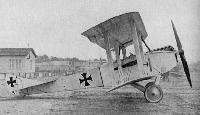 |
O.Thetford, P.Gray - German Aircraft of the First World War /Putnam/ |
| L.V.G. C IV |
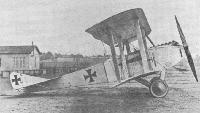 |
В.Кондратьев - Самолеты первой мировой войны |
| Бомбардировщик LVG C-IV |
 |
J.Herris - LVG Aircraft of WWI. Volume 2: Types C.II-C.V /Centennial Perspective/ (35) |
| LVG C.IV 4349/16 of Feld-Flieger Abteilung 62. (Bruno Schmaling) |
 |
J.Herris - LVG Aircraft of WWI. Volume 2: Types C.II-C.V /Centennial Perspective/ (35) |
| LVG C.IV 4351/15 of FA(A) 257 flown by Uffz. Abels, pilot, and Oblt. Worner were downed on 14 January 1917 and made POW. Here it is on display in Nancy. (Greg VanWyngarden) |
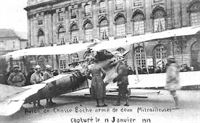 |
J.Herris - LVG Aircraft of WWI. Volume 2: Types C.II-C.V /Centennial Perspective/ (35) |
| LVG C.IV 4351/15 on display in Nancy. (Greg VanWyngarden) |
 |
J.Herris - LVG Aircraft of WWI. Volume 2: Types C.II-C.V /Centennial Perspective/ (35) |
| LVG C.IV 4351/15 on display in Nancy. (Greg VanWyngarden) |
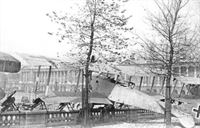 |
J.Herris - LVG Aircraft of WWI. Volume 2: Types C.II-C.V /Centennial Perspective/ (35) |
| LVG C.IV 4351/15 on display in Paris in new paint and updated crosses. (Greg VanWyngarden) |
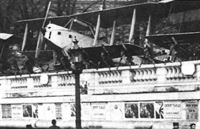 |
J.Herris - LVG Aircraft of WWI. Volume 2: Types C.II-C.V /Centennial Perspective/ (35) |
| LVG C.IV 4351/15 on display in the Tuileries Garden line-up in Paris. (Greg VanWyngarden) |
 |
J.Herris - LVG Aircraft of WWI. Volume 2: Types C.II-C.V /Centennial Perspective/ (35) |
| LVG C.IV 4351/15 on display in Tuileries Garden, Paris in October 1918. (Greg VanWyngarden) |
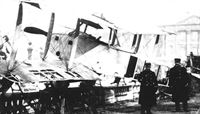 |
J.Herris - LVG Aircraft of WWI. Volume 2: Types C.II-C.V /Centennial Perspective/ (35) |
| LVG C.IV 4351/15 after Armistice looting in Tuileries Garden, Paris. (Greg VanWyngarden) |
 |
J.Herris - LVG Aircraft of WWI. Volume 2: Types C.II-C.V /Centennial Perspective/ (35) |
| LVG C.IV 4370/15 with a crewman. A rack of flare cartridges is mounted on the fuselage below the gun ring. (Peter M. Grosz Collection/SDTB) |
 |
J.Herris - LVG Aircraft of WWI. Volume 2: Types C.II-C.V /Centennial Perspective/ (35) |
| LVG C.IV 4391/16 serving with Flieger-Abteilung (A) 292 with the aircrew in their cockpits and the ground crew posing for their portrait. (Courtesy Bruno Schmaling) |
 |
J.Herris - LVG Aircraft of WWI. Volume 2: Types C.II-C.V /Centennial Perspective/ (35) |
| LVG C.IV 4391/15 in dark camouflage and modified gravity tank mounted to the underside of the upper wing. The exhaust pipe has been bent up and away from the fuselage to keep the exhaust gases away from the crew. The purpose of the light areas near the wing roots is unknown. (Peter M. Grosz Collection/SDTB) |
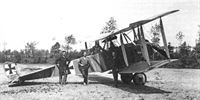 |
J.Herris - LVG Aircraft of WWI. Volume 2: Types C.II-C.V /Centennial Perspective/ (35) |
| Camouflaged LVG C.IV 4401/15 with its air and ground crew. (Peter M. Grosz Collection/SDTB) |
 |
J.Herris - LVG Aircraft of WWI. Volume 2: Types C.II-C.V /Centennial Perspective/ (35) |
| LVG C.IV 267/16 preparing for an acceptance flight at Johannisthal. Note the steel rims used to save rubber. (Peter M. Grosz Collection/SDTB) |
 |
J.Herris - LVG Aircraft of WWI. Volume 2: Types C.II-C.V /Centennial Perspective/ (35) |
| LVG C.IV 285/16 of FliegerAbteilung (A) 224 photographed on 22 May 1917. The vertical exhaust stack was fitted to most late-production aircraft. (Peter M. Grosz Collection/SDTB) |
 |
J.Herris - LVG Aircraft of WWI. Volume 2: Types C.II-C.V /Centennial Perspective/ (35) |
| LVG C.IV marked with a chevron being readied for a mission. The upper cowling panel has been removed for service. (Peter M. Grosz Collection/SDTB) |
 |
J.Herris - LVG Aircraft of WWI. Volume 2: Types C.II-C.V /Centennial Perspective/ (35) |
| LVG C.IV of Kagohl I. (Bruno Schmaling) |
 |
J.Herris - LVG Aircraft of WWI. Volume 2: Types C.II-C.V /Centennial Perspective/ (35) |
| In the German Air Service pilots were referred to as Franz and observers as Emil. Here the officer observer, or Emil, is on the left and his Franz is a sergeant. The LVG C.IV in the background shows its 'LVG' logo punched into the upper engine cowling. |
 |
J.Herris - LVG Aircraft of WWI. Volume 2: Types C.II-C.V /Centennial Perspective/ (35) |
| LVG C.IV 264/16 of the Bayerishe Flieger Abteilung 5 based at Douai. The colorful paint scheme was in the blue and white of the Bavarian flag but used a square pattern instead of the Bavarian Rauten. |
 |
J.Herris - LVG Aircraft of WWI. Volume 2: Types C.II-C.V /Centennial Perspective/ (35) |
| Oblt. Franz Hailer (center, hands on hips) with aircrew posing in front of an LVG C.IV at left (with late-production exhaust pipe) and Roland C.II at right. Hailer was the CO of FFA 9b (from 30 May 1915 to 21 June 1916), but this photo probably shows him as CO of FA(A) 292b in May 1917. |
 |
Форум - Breguet's Aircraft Challenge /WWW/ |
 |
J.Herris - LVG Aircraft of WWI. Volume 2: Types C.II-C.V /Centennial Perspective/ (35) |
| A grateful observer acknowledges the skill of his pilot who safely landed the LVG C.IV in the background with only a broken propeller and bent undercarriage. (Bruno Schmaling) |
 |
J.Herris - LVG Aircraft of WWI. Volume 2: Types C.II-C.V /Centennial Perspective/ (35) |
| Offz.-Stv. Matthias Denecke poses with an LVG C.IV of Flieger-Abteilung 33. The massive propeller was made by Wolff. (Greg VanWyngarden) |
 |
J.Herris - LVG Aircraft of WWI. Volume 2: Types C.II-C.V /Centennial Perspective/ (35) |
| LVG C.IV of FAA 292b with aircrew. Franz Hailer is seen again in this photo of FA(A) 292b, third from left, arms akimbo. The under-wing gravity tank is prominent. (Bruno Schmaling) |
 |
J.Herris - LVG Aircraft of WWI. Volume 2: Types C.II-C.V /Centennial Perspective/ (35) |
| Light-colored LVG C.IV with crew; the gravity tank under the upper wing is prominent. The punched initials 'LVG' are barely visible in the upper fuselage cowling. (Peter M. Grosz Collection/SDTB) |
 |
J.Herris - LVG Aircraft of WWI. Volume 2: Types C.II-C.V /Centennial Perspective/ (35) |
| LVG C.IV designated 'LVG .1' of the II Marine Feld-Flieger Abteilung with aircrew and mechanics. (Peter M. Grosz Collection/SDTB) |
 |
J.Herris - LVG Aircraft of WWI. Volume 2: Types C.II-C.V /Centennial Perspective/ (35) |
| An uncamouflaged LVG C.IV with shark-mouth marking. (Greg VanWyngarden) |
 |
J.Herris - LVG Aircraft of WWI. Volume 2: Types C.II-C.V /Centennial Perspective/ (35) |
| Mechanics pose with a dark-painted LVG C.IV from a Marine Landflieger Abteilung with late-production exhaust. (Peter M. Grosz Collection/SDTB) |
 |
J.Herris - LVG Aircraft of WWI. Volume 2: Types C.II-C.V /Centennial Perspective/ (35) |
| LVG C.IV of FliegerAbteilung (A) 224 being prepared for takeoff. (Peter M. Grosz Collection/SDTB) |
 |
J.Herris - Development of German Warplanes in WWI /Centennial Perspective/ (1) |
| Powered by the rare 220 hp Mercedes D.IV straight-eight engine, the LVG C.IV was faster than Allied fighters when it first reached the front. Due to its speed it was used primarily for photo-reconnaissance. Britenschreck, sports a sharkmouth. |
 |
J.Herris - LVG Aircraft of WWI. Volume 2: Types C.II-C.V /Centennial Perspective/ (35) |
| Two more views of LVG C.IV Britenschreck (Britons' fright) showing the other side of the aircraft. (Peter M. Grosz Collection/SDTB) |
 |
J.Herris - LVG Aircraft of WWI. Volume 2: Types C.II-C.V /Centennial Perspective/ (35) |
| Early production LVG C.IV Britenschreck (Britons' fright or Fear Over Britain) was certainly one of the first aircraft to be decorated with a shark's mouth although it was preceded by Roland C.II aircraft with shark-mouth markings. The C.IV was powered by the rare 220 hp Mercedes D.IV straight-eight. The insulating white panel by the exhaust header protects the fuselage from exhaust heat. (Peter M. Grosz Collection/SDTB) |
 |
J.Herris - LVG Aircraft of WWI. Volume 2: Types C.II-C.V /Centennial Perspective/ (35) |
| Two views of camouflaged LVG C.IV aircraft showing their camouflage pattern. The aircraft above is being prepared for flight and the one below has had a landing accident, an all too frequent occurrence using the primitive airfields of the day. |
 |
J.Herris - LVG Aircraft of WWI. Volume 2: Types C.II-C.V /Centennial Perspective/ (35) |
| Port and starboard views of an LVG C.IV attached to FliegerAbteilung (A) 250. The tarp over the propeller is to prolong its life by protecting it from the elements. The exhaust header is supported by two bracing struts and has the bent horn design used by many LVG C.IV aircraft. (Peter M. Grosz Collection/SDTB) |
 |
J.Herris - Roland Aircraft of WWI /Centennial Perspective/ (9) |
| A portrait of Flieger-Abteilung (Artillerie) 292 (Artillery cooperation aviation unit 292) with two Roland C.II aircraft in the lineup behind the aircrew. The aircraft on the left is an AEG C.IV, and in the center is an LVG C.IV. Like the Roland C.II, the AEG C.IV used the 160 hp Mercedes D.III.The LVG used the rare 220 hp Mercedes D.IV engine, an 8-cylinder engine created by adding two more cylinders to the 6-cylinder Mercedes D.III. Most German two-seater units were equipped with a variety of types optimized for the different roles they performed. |
 |
J.Herris - LVG Aircraft of WWI. Volume 2: Types C.II-C.V /Centennial Perspective/ (35) |
| German two-seater units often had a variety of different aircraft types for different missions, and FAA 292b's aircraft line up is shown here. From left to right the aircraft are AEG C.IV, Roland C.II, LVG C.IV, another Roland C.II, a DFW C.V, and an Albatros C.V. This photo was taken at the same time as the other FAA 292b photos above. (Bruno Schmaling) |
 |
J.Herris - LVG Aircraft of WWI. Volume 2: Types C.II-C.V /Centennial Perspective/ (35) |
| LVG C.IV (probably 4341/15) flying fast over the Johannisthal airfield. (Peter M. Grosz Collection/SDTB) A dramatic ground-to-air image of the 1916 LVG C IV. This type proved to be another reconnaissance design that failed to progress beyond the developmental stage. Powered by a 220hp Mercedes D IV, the LVG C IV appears to have been little more than a slightly scaled-up, more powerful variant of the widely used LVG C II. |
 |
J.Herris - LVG Aircraft of WWI. Volume 2: Types C.II-C.V /Centennial Perspective/ (35) |
| Captured LVG C.IV 4351/15, works number 763, during evaluation at the French test center at the Section Technique de I'Aeronautique at Villacoublay. It came from FA(A) 257, and the pilot, Uffz. Jakob Abels, and the observer, Oblt. Eugen Worner, were taken POW. It originally bore the code "III" on the fuselage and was displayed in Nancy. When the French markings were added, the original military serial 4351/15 was replaced by '763', the aircraft's work number. Towards the end of the war it was repainted with 1918 German insignia so it could be displayed along with many other captured a/c at the Tuilleries Gardens in Paris, next to the Place de la Concorde. (Peter M. Grosz Collection/SDTB) |
 |
J.Herris - LVG Aircraft of WWI. Volume 2: Types C.II-C.V /Centennial Perspective/ (35) |
| A special setup fabricated by the unit mechanics using exhaust heat piped to the observer's gun to prevent freezing of the gun in combat. (Peter M. Grosz Collection/SDTB) |
 |
J.Herris - LVG Aircraft of WWI. Volume 2: Types C.II-C.V /Centennial Perspective/ (35) |
| The wreckage of LVG C.IV 4407/15 of Lt. Lubbert, pilot, and Lt. Heinz Lubarsch, observer, of Flieger-Abteilung 18. (Greg VanWyngarden) |
 |
J.Herris - LVG Aircraft of WWI. Volume 2: Types C.II-C.V /Centennial Perspective/ (35) |
| Camouflaged LVG C.IV 247/16 of FFA 292b destroyed in a bad landing. The LVG logo punched in the upper cowling for cooling is barely visible in the photo below, (upper photo: Peter M. Grosz Collection/SDTB); lower photo Bruno Schmaling). |
 |
J.Herris - LVG Aircraft of WWI. Volume 2: Types C.II-C.V /Centennial Perspective/ (35) |
| A so-called Damenlandung (lady's landing) in an LVG C.IV. (Greg VanWyngarden) |
 |
J.Herris - LVG Aircraft of WWI. Volume 2: Types C.II-C.V /Centennial Perspective/ (35) |
| The remains of the LVG C.IV of Uffz. Rudolf Leuthens, pilot, and Lt. Walter Retze, observer, of Flieger-Abteilung (A) 267. Brought down on 16 November 1916, they were made POW. (Greg VanWyngarden) |
 |
J.Herris - LVG Aircraft of WWI. Volume 3: Types C.VI-C.XI & Fighters /Centennial Perspective/ (36) |
| LVG C.IV |
 |
J.Herris - LVG Aircraft of WWI. Volume 3: Types C.VI-C.XI & Fighters /Centennial Perspective/ (36) |
| LVG C.IV |
 |
J.Herris - LVG Aircraft of WWI. Volume 3: Types C.VI-C.XI & Fighters /Centennial Perspective/ (36) |
| LVG C.IV |